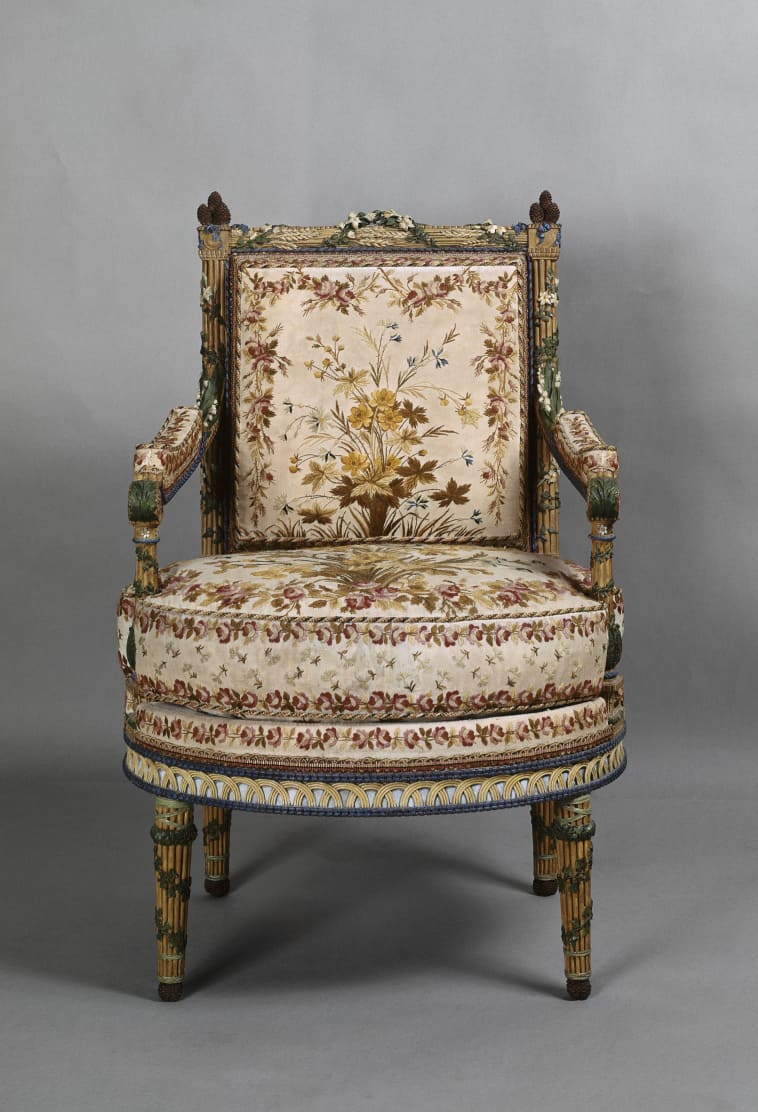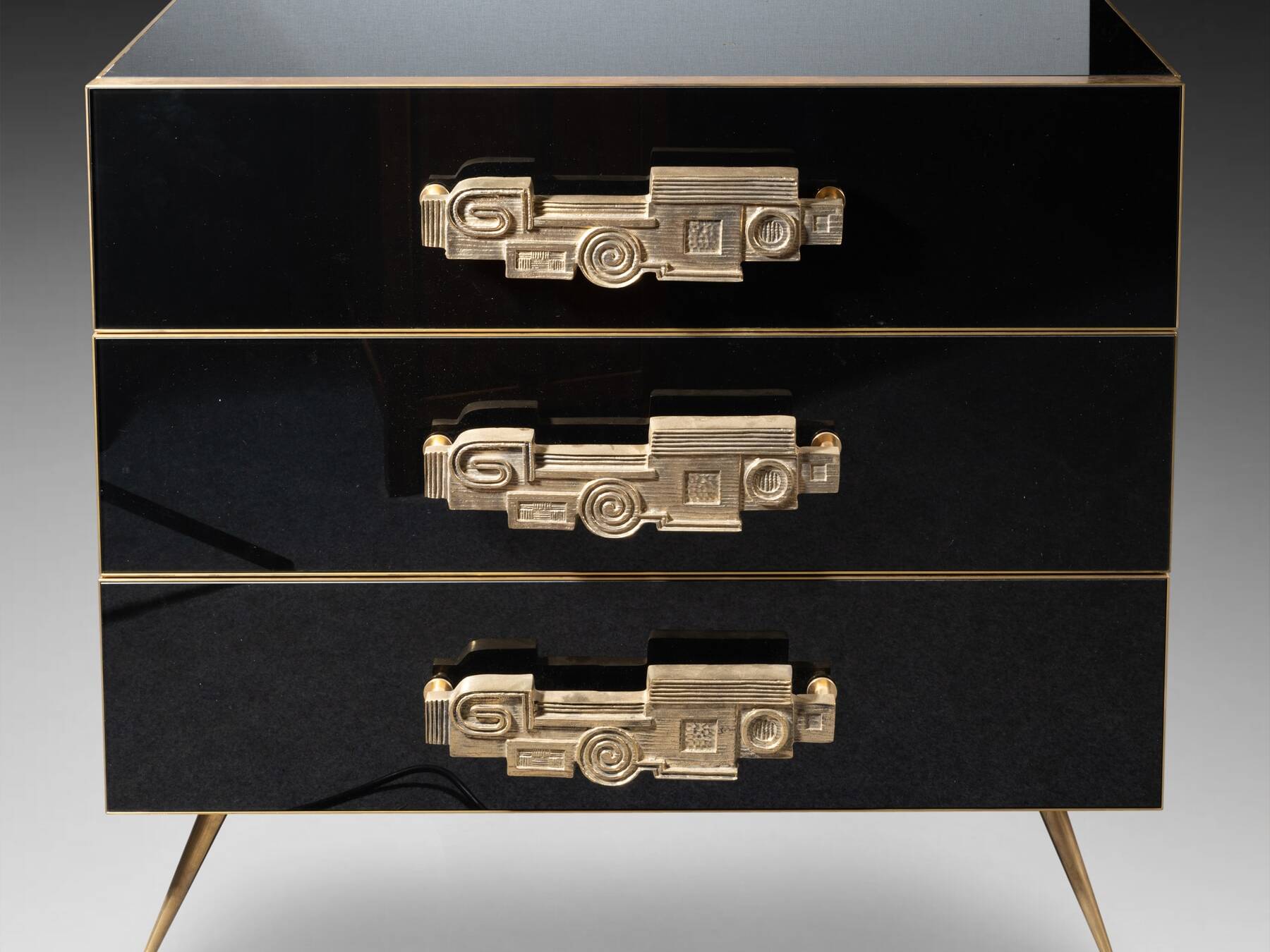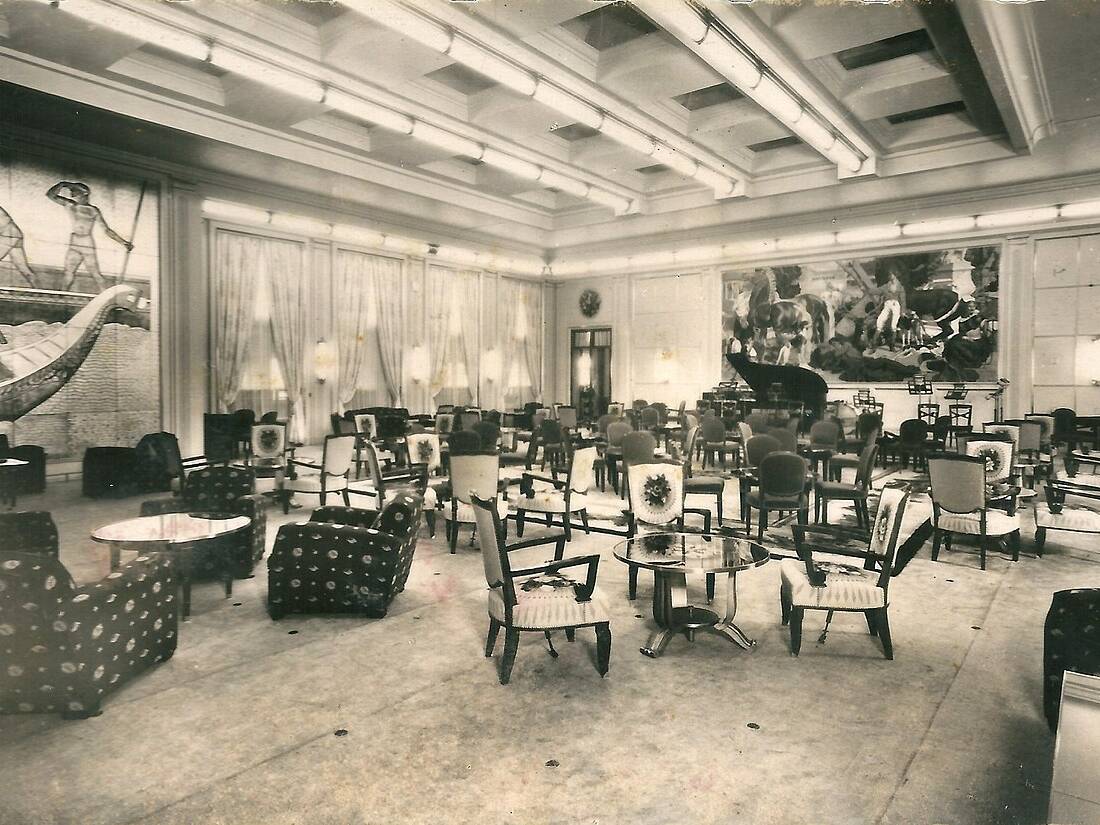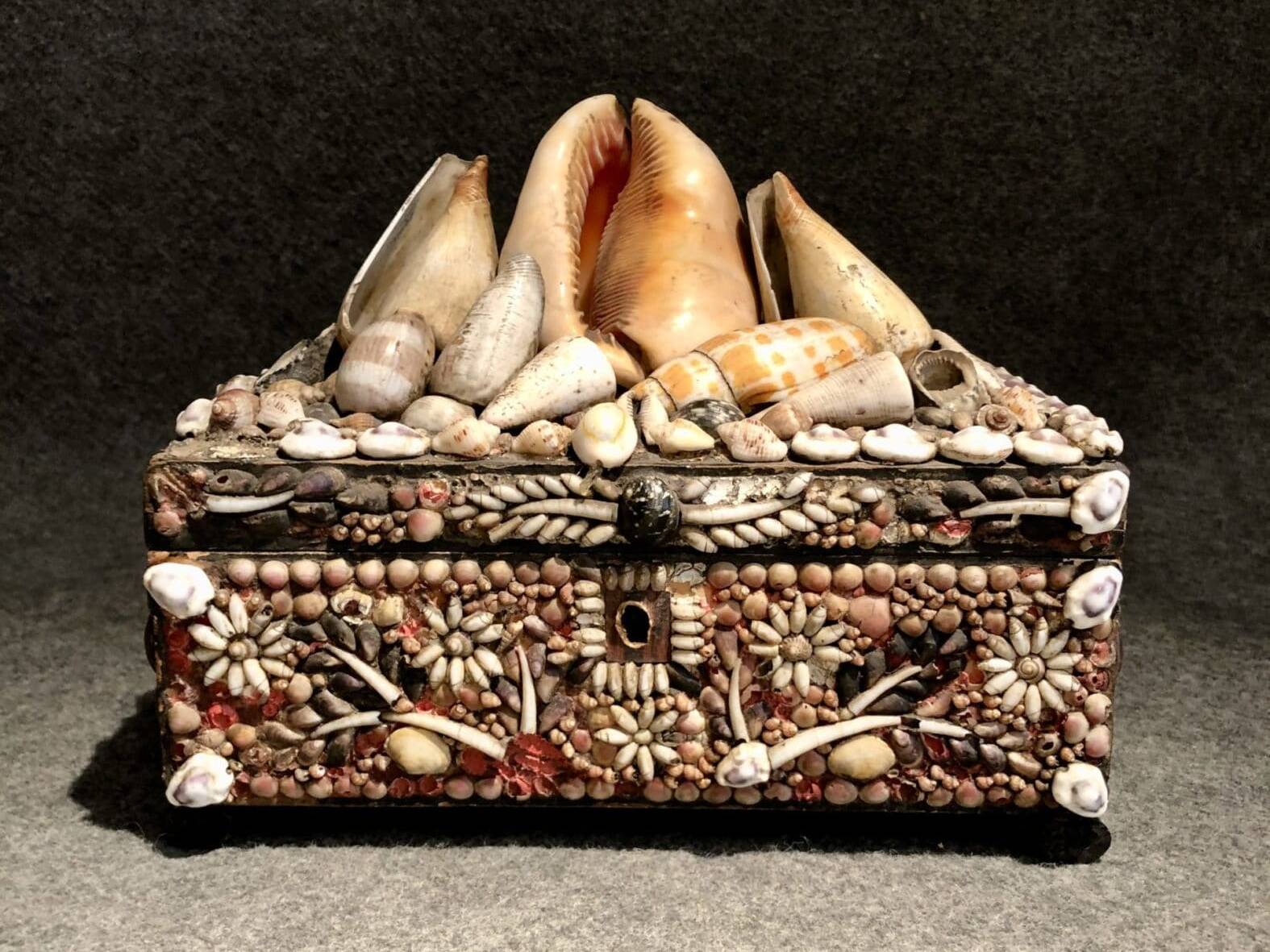Birth of the Venetian crystallo and competition from Bohemian glass
In the middle of the 15th century, a mixture developed in Venice at the instigation of the glassmaker Angelo Barrovier (died in 1496) made it possible for the first time to obtain a translucent glass of great purity and solidity which, although relative today, is at the time of the technical prowess. The precious recipe will give all its panache to a lucrative Venetian glassworks protecting tooth and nail the secret of this glass baptized crystallo, going so far as to condemn to death the craftsmen divulging the mysteries of the workshops outside the lagoon. The secret lay in the pebbles from Ticino or the Po, ground until a very pure silica was obtained, to which the ashes of marine plants were associated, ridding this soda-lime glass of its impurities while solidifying it. The astonishingly ductile parison allowed glassmakers to explore shapes of cups as flexible and elegant glasses. The graceful Italian cristallo was enamelled, painted or colored in the mass in the Renaissance style of the time. All the princely tables were craving for it, the Pope was not indifferent to this magnificent glass, then the latest seduced beyond the borders. An object of luxury as much as of curiosity, Italian glass wasted no time in arousing covetousness, with glassmakers everywhere trying to unlock its secret.
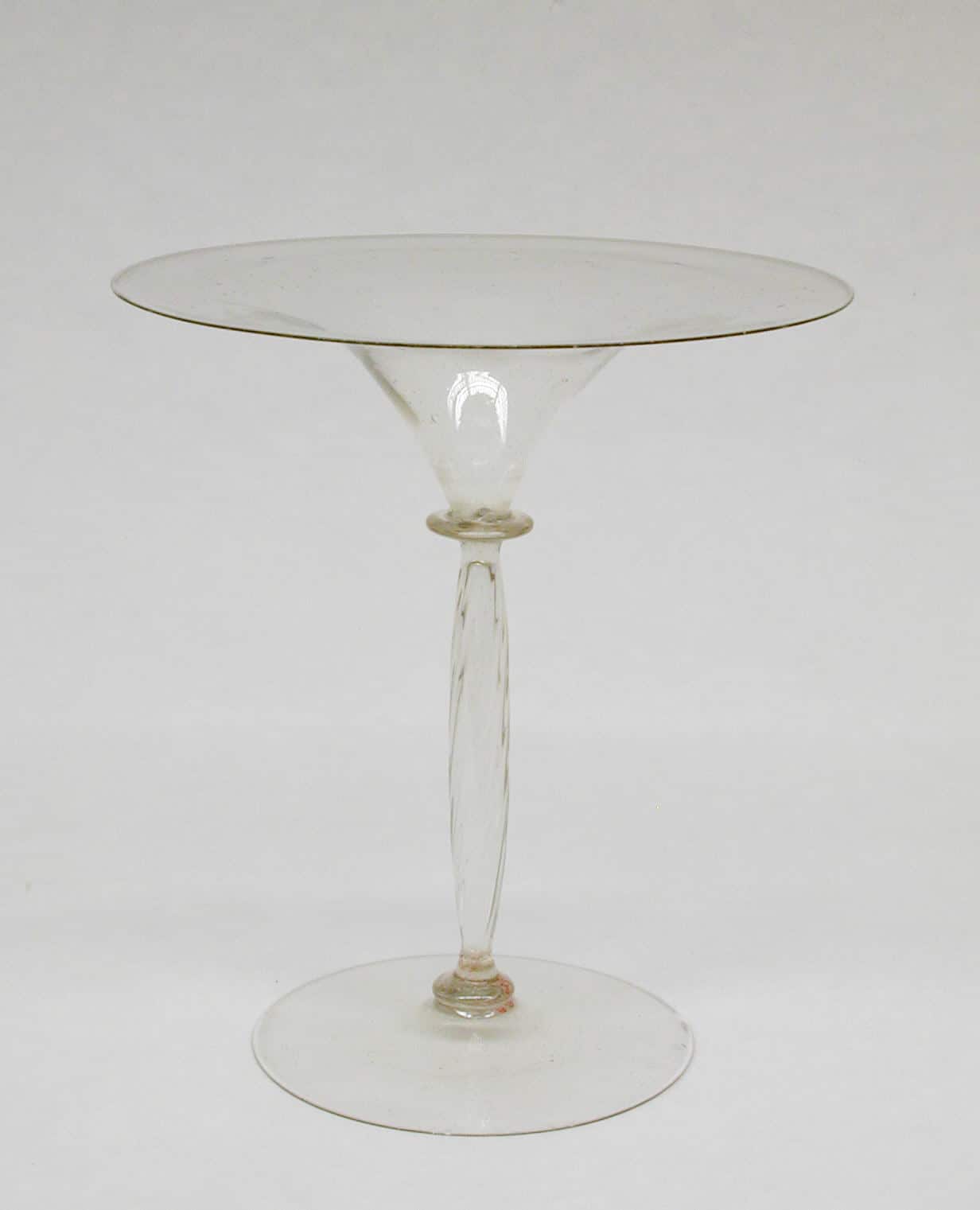
Despite deadly threats from the Venetian authorities, the glassmakers defied the bans more out of necessity than out of rebellion. In the Middle Ages and in modern times, knowledge circulated; these itinerant craftsmen depend on raw materials and adapt their recipes to the terroirs they encounter, striving to create glasses in the “Venice style”. This style then takes more from the imitation of the decorations than that of the material. However, Bohemia has rich forest resources which allow in the 16th century the elaboration of a glass as hard and as heavy as rock crystal. Bohemia surpasses Venice: like crystals, Bohemian potasso-calcium glass is not hot-worked but can be cut and engraved. Caspar Lehmann (1570 – 1622), lapidary to Emperor Rudolf II (1552 – 1612) finally consecrates this “Bohemian crystal” by adapting to this glass the wheel engraving commonly used for precious and semi-precious stones. Lehman thus makes Bohemian glass an equivalent of natural crystals. Still, the resemblance to rock crystal wasn’t always entirely uncanny; Bohemian glass retained gray or yellow reflections for a long time, altering the colorless purity towards which the glassmakers were tending. In the 16th and 17th centuries, Bohemian glass lavishly cut and engraved with Baroque motifs was exhibited on the richest tables in Europe, it stood out as solid and sparkling pendants on chandeliers and became an adornment when mounted in jewelery or works of art, such as the souvenir of rock crystals embedded in medieval goldsmithery.
The making of real crystal
It was a restriction rather than an obstinacy that allowed England to be the first to produce the real crystal. Because there is a chemical distinction between glass and crystal. While glass is an amorphous solid made up of disordered atoms, crystal is an atomic structure uniquely ordered by lead oxide. However in 1615, Jacques I (1566 – 1625) decreed that the use of wood was henceforth the exclusive use of the Navy, recommending to his subjects the use of coal for the needs they claimed were necessary in any other field. The glassmakers not being exempt from this treatment, they used the new fuel which required the addition of a flux in the glass recipe. After a few attempts giving birth to flint glass, the addition of lead oxide allowed Georges Ravenscroft (1632 – 1683) to appropriate by patent in 1674 the interest of this component for obtaining a sparkling glass and with a unique sound that certainly distinguished him. In a few years, the English crystal factories surpassed both Venice and Bohemia. The Crystal Palace, built in 1851, then amazed the world by presenting works of art, lighting and crystal furniture. Orders were pouring in from all over, but France was already ahead of its English neighbour.
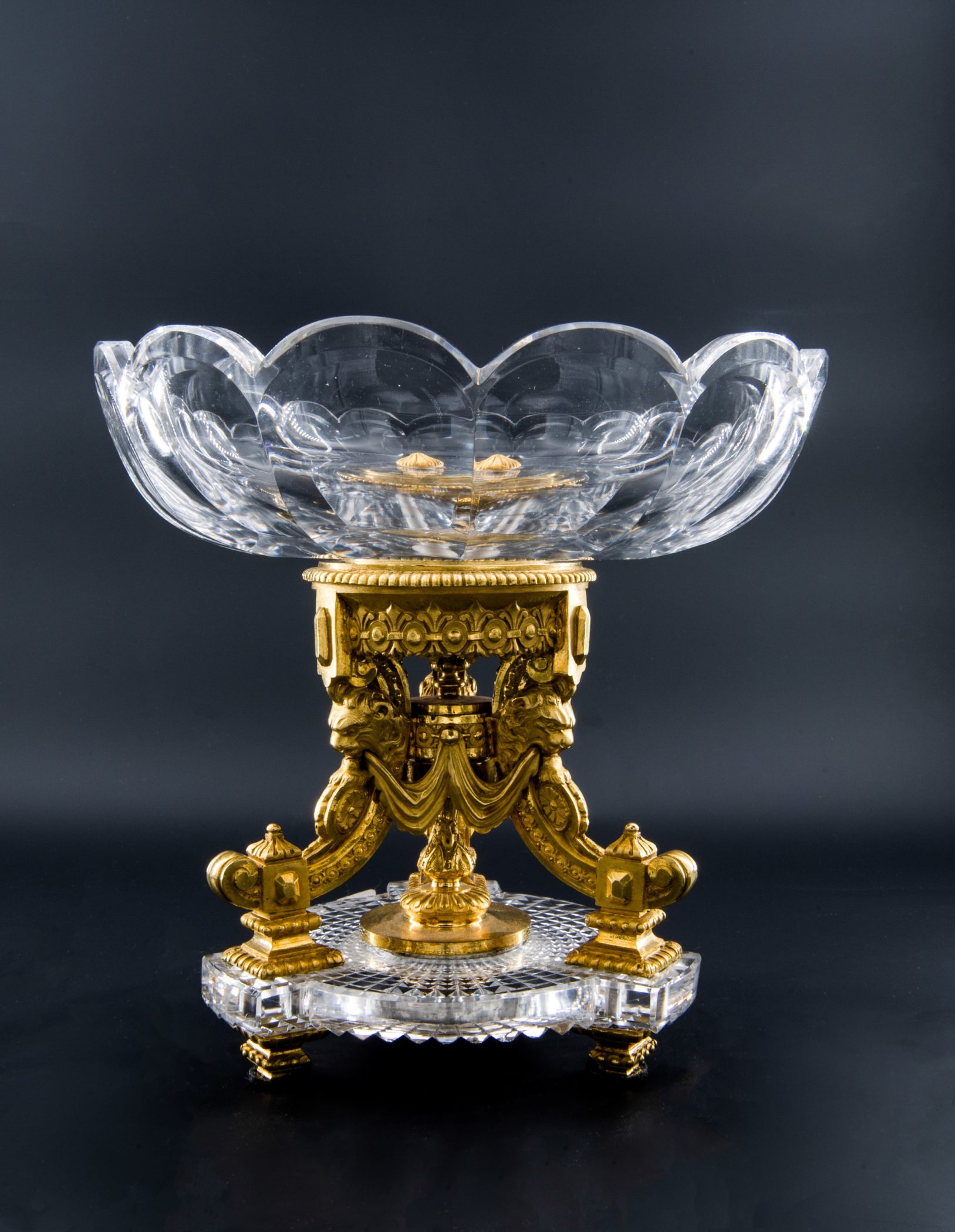
In 1781, the glassmakers of Saint-Louis also discovered the secret of crystal. In 1816, Baccarat was introduced to this art and from 1829 Saint-Louis devoted itself entirely to it. The two houses are not alone in arguing over this new production, many crystal factories in Île de France are involved in it. Clichy and Bercy stand out, but not enough to compete with the two historic houses, a time associated to stifle their competitors.
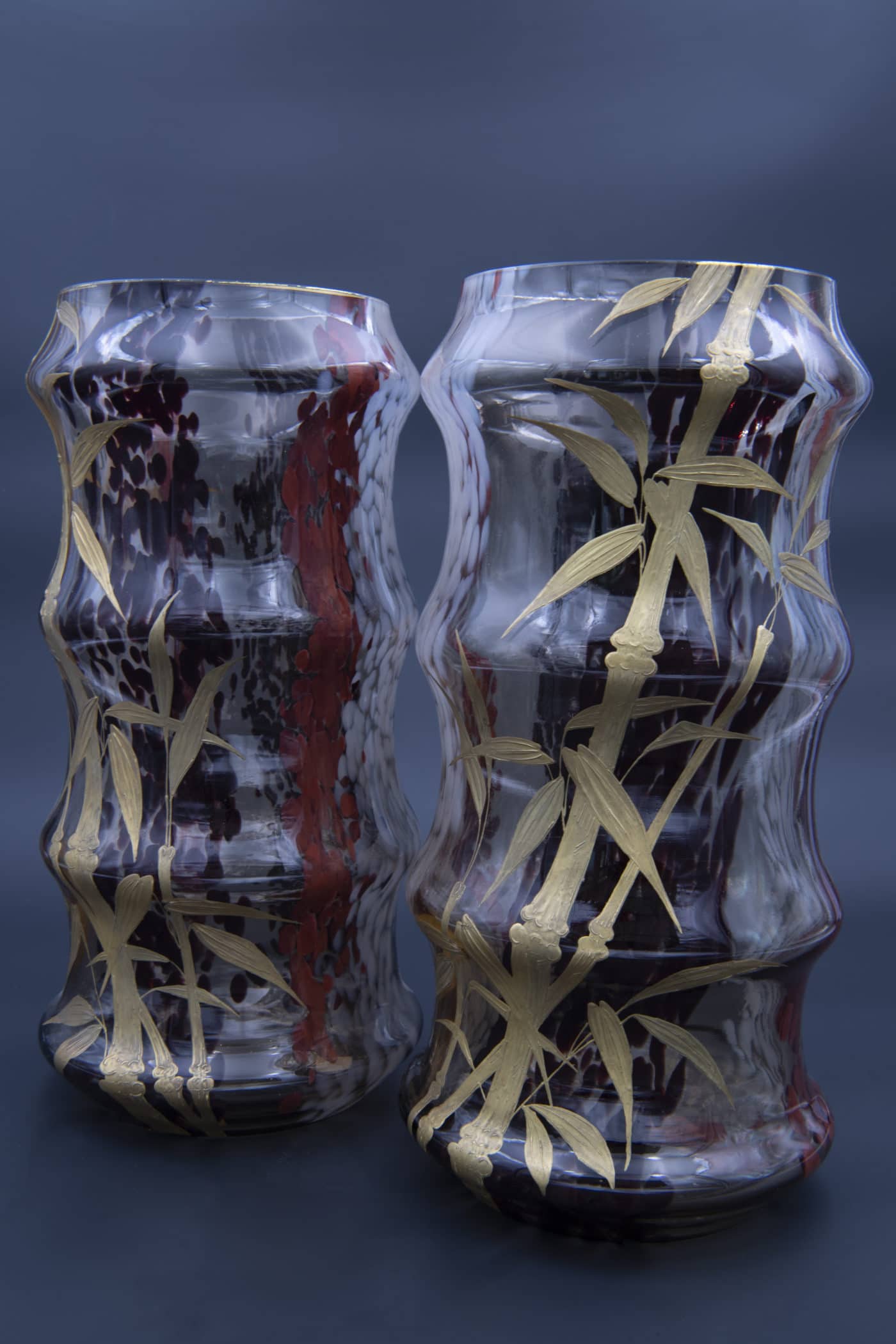
In the second half of the 19th century, Saint-Louis and Baccarat shared a French market driven by royal and imperial orders, then exported monumental works to Russia, India or the Ottoman Empire. The art of the table having become the new reflection of social success, the crystal factories offer luxurious glass and lighting services that appeal to both aristocratic and bourgeois customers. Available in colors and opalines, crystal is no longer a jealous secret in the 20th century and its quality has been the subject of a European designation since 1969. Today, crystal must contain at least 24% lead, a threshold below which we speak of sound or crystalline glass.

Autres ressources et documentations
17 April 2025
The Middle-Ages Furniture
Rare and highly sought-after, Middle-Ages furniture is making a strong comeback. An overview of this market, where enlisting the guidance of a professional is strongly advisable.
18 March 2025
Murano Glass Furniture
Since the beginning of the 20th century, Murano glassmakers have been exploring new horizons. After classic lighting and decorative art, Murano glass is now used to adorn…
16 December 2024
A bronze triton after the sculptures of François Girardon (1628 – 1715) in Versailles
This fountain element is all the more admirable as it is sculpted after the masterpieces of the Pyramid Basin, on the parterre of the North Wing of the Versailles gardens.
18 November 2024
Tyco Bookcase, by Manfredo Massironi, for Nikol International
A pure creation of optical art research in the 1960s, the Tyco library shelf designed by Manfredo Massironi invites the viewer to bring the work of art to life on a daily basis.
3 August 2024
The Ocean Liner Style
In the 20th century, the immense ocean liners connecting the Old Continent and the New World were ambassadors of tastes and innovations on both sides of the Atlantic.
15 July 2024
An 18th Century Shell Box
From the Regency to the death of Louis XV, the art of the shell was the center of all attention.

